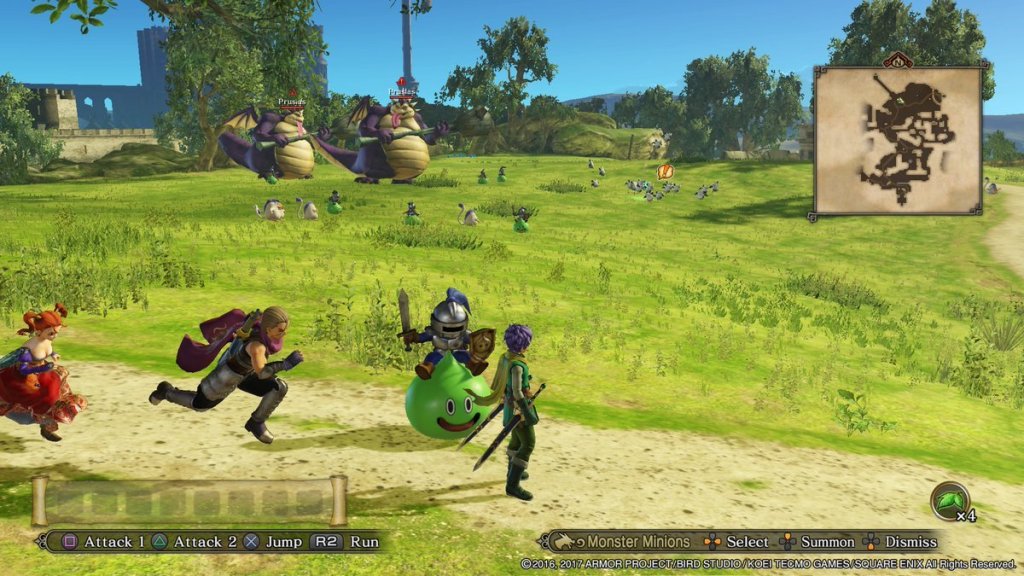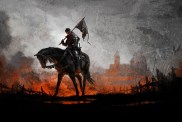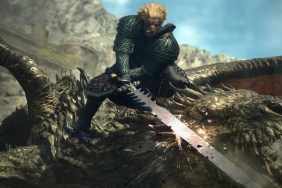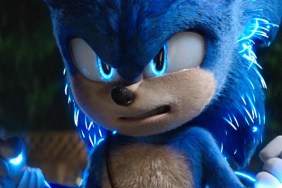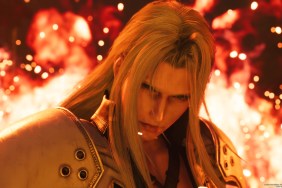Dragon Quest Heroes II makes one hell of a first impression. Within minutes of booting up the sequel, I was greeted with an open plain to explore. One that was filled with groups of slime and other familiar foes from Enix’s legendary role-playing franchise. This sense of open space and grandeur is an impressive departure from the original, which didn’t have any sort of connected world, but rather had the player using an airship to go to specific locales. This felt more like the Dragon Quest that I knew, and the seeds of an interesting continent to explore was quickly implanted into my brain.
This shakeup felt as if Dynasty Warriors developer Omega Force had responded to the criticism of the original in a major way. After a few additional minutes of exploring, I had stumbled across a nearby town. Called Accordia, the town was filled with kids running about and shops looking to sell me all sorts of weaponry. Since it was located smack dab in the middle of the world, there were also a series of branching paths that led to each of the seven areas that make it up. I was instantly giddy with excitement, and it felt as if this was the key ingredient that the original lacked.
Beyond the new focus on exploration, a lot of Dragon Quest Heroes II will be familiar to anyone who has played a musou title in the past. There’s a lot of mashing on the square and triangle buttons to deliver epic combos (don’t be shocked to see the hit counter go into the multiple hundreds). It’s a satisfying formula that Omega Force has used for over a decade, although this iteration has the extra bonus of using some ideas from Dragon Quest. This comes in the form of summonable monster allies, spells that can be cast by pressing the right shoulder button, and the ability to jump around to any character within the party you’re in by tapping the left trigger. Just like the original, the combat has just enough depth to not get boring but is incredibly easy to learn. It’s also worth noting that the action is extremely smooth, as long as players don’t turn on the PS4 Pro exclusive Enhanced Mode. It’s far from “enhanced,” as it ends up offering a slightly better picture at an awful frame rate.
While the combat largely remains the same from the past game, Omega Force has added some additional tweaks that will be appreciated by players. One of the biggest comes in the form of Party Powers, which are team-wide skills that can be equipped. These range from simple buffs such as increasing maximum HP by four for everyone to more specific ones such as doing more damage against flying enemies. Effectively using these powers can help players get out of a tough spot. Other smaller upgrades include the ability to use ingredients to upgrade accessories (I ended up using this in order to get an additional heal boost), and being able to turn off animations for the character’s ultra powerful coup de grâce attacks.
Kind of Open
My excitement about the connected world was quickly stifled once I got into my first major story mission. It was here that I realized that the game’s missions all take place on isolated maps away from the vast environments. That isn’t a huge issue in of itself, but it really kills the feeling that you’re exploring a connected world. Instead, it’s more like the player has to go through one long hub area to get where they’re supposed to be.
What further broke the illusion of freedom was when I realized how scripted the environments were. Seeing a sand golem come to life in front of a rocky overpass was cool the first time, but it began to elicit a groan after the 20th. I also helped rescue the same exact villager from getting attacked by a group of slimes about a dozen times. When he continued to thank me for doing so, I couldn’t help but roll my eyes because there was no chance he’d learn from his mistakes. Omega Force didn’t create a world, they created a series of set pieces that start to feel increasingly empty after the first 10 hours.
The major attempt at adding some variety into the world comes in the form of side-quests that can be accepted within Accordia. These are basic, throwaway missions that have the player grinding out different items or killing a certain number of enemies. It’s a decent way to add some additional replay value, but sadly the presentation of the quests is pretty bad. There’s no on-screen indicator of how far along the player is on the quests they have active, and I had to dig through three different menus if I wanted to check my progress. If implemented correctly these quests could’ve made the open spaces feel less like a chore to get through, but they add practically nothing with how they are currently implemented. That said, there is a little tweak that gave you a notification once you’ve completed a side quest, which is an improvement to how it was handled in the first one.
Growing Pains
The new connected world format may ultimately fall flat for Dragon Quest Heroes II, but the story missions are an improvement upon the original. Well, for the most part. One of the things I disliked about the original was how many missions revolved around protecting an object from waves of enemies. That’s gone for a good chunk of the game (although it obnoxiously rears its head in the back third of the game), and instead, the player can focus more on dishing out rad combos against all kinds of bosses. The action shines here, and the story is surprisingly well told for the most part, although some serious parts don’t come across great. There are some fun, and kind of obvious, twists during the 30-hour campaign, but it was fun seeing characters from my favorite characters from my favorite Dragon Quest games interact with each other.
Unfortunately, as touched on previously, the game ends up dropping the ball in terms of mission design about two-thirds into the game. The last 10 hours are filled with facing the same enemies that the player had fought for the prior 20, but colored slightly different. That’s not a huge deal for the minor baddies that die after a few hits, but I got sick of taking on the same mini-boss fight multiple times. There weren’t any new attack patterns that I had to dodge, it was just the same old. Variety isn’t typically a musou title’s strongest point, but Heroes II ends up going about 10 hours too long and doesn’t justify it.
These later missions are also where the game’s rather limited partner artificial intelligence starts to show. My three partners always followed my character around, so it meant that I couldn’t count on them to help defend specific areas. This makes later missions more difficult than they should be, and it’s shocking that there isn’t any way to influence the computer’s actions as its been a feature in past count on them to help defend specific areas. This makes later missions more difficult than they should be, and it’s shocking that there isn’t any way to influence the computer’s actions as its been a feature in past Warriors titles. What makes it even more frustrating is that the protection missions don’t even make sense in the Dragon Quest world, as why can’t I just heal the people I’m protecting? Instead, I’m forced to watch their health bar constantly trickle down because the developer couldn’t come up with an interesting task for the player.
This frustration with computer teammates bleeds into regular combat as well. I often found myself annoyed by how irregular the healing was, with a key point being the final boss fight of the game. During an almost 30-minute battle, my partners often ended up getting hit by the villain’s attacks to the point where I had to use up all of my revival medicine on them. I never got the computer to fully cooperate with me, and I ended up having to constantly switch characters manually in order to heal. Another hilarious moment occurred when the boss’ weak point was exposed, My best warrior chose to attack the monster’s foot instead of the critical damage point. I eventually finished the foe off myself, but it was a sadly fitting end to a game that long overstayed its welcome.
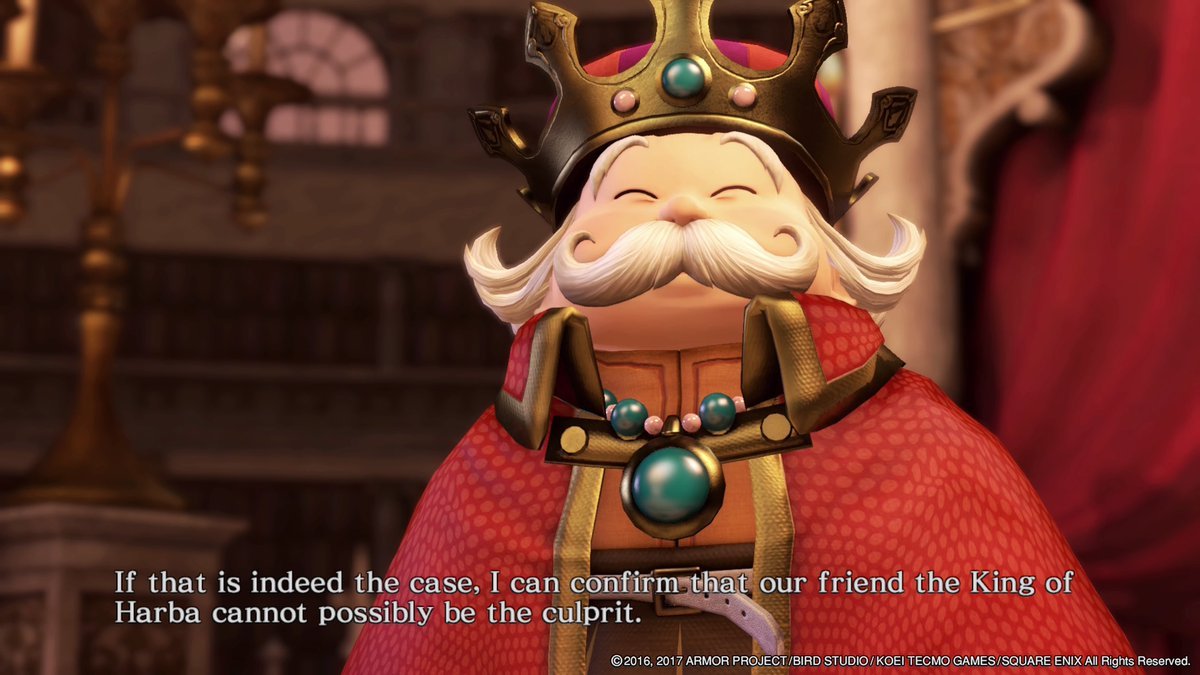
Offline Play
One thing that could’ve helped solve my teammate issue was human partners. That’s theoretically possible in Dragon Quest Heroes II, but the feature has been completely broken since I’ve had the game. Before entering a story mission the player is given to request help from others (you can get a specific user by using an incredibly archaic system that has the player typing in a four-digit code). Sadly, this hasn’t worked, and I haven’t been able to do any of the four-player cooperative play that is possible. This sounds awesome in theory, as the final boss could be defeated quite easily if characters were playing their proper roles, but it’s a non-factor when it’s broken at the moment.
The other way players can get into Dragon Quest Heroes action with friends is by participating in dungeons. These can be done either solo or cooperatively (assuming it is working), and are essentially a series of generic rooms filled with a bunch of enemies. It’s not something I enjoyed doing solo, and I really doubt friends would make the grind seem fun. The biggest bummer is not that the online doesn’t work, but that it’s been so poorly implemented in the first place. I could see it being a lot of fun if players could simply invite others into their world and do the campaign in co-op, but sadly that isn’t even an option here.
Sophomore Slump
Dragon Quest Heroes II attempts to build upon the original in some smart ways, but the execution ends up being rather messy. The connected world doesn’t provide the player with a living, breathing world to explore, but rather it’s reminiscent of a diorama. One that attempts to fool the player into not seeing how shallow and lifeless things are outside of its walls. It’s a fun, but flawed, follow-up. One that ultimately feels like a tease, as it adds a few much-needed improvements, but not enough to push it over the edge.
Review code for Dragon Quest Heroes II provided by the publisher. Reviewed on PS4 Pro. For more information on scoring, please read our Review Policy here.
-
Combat has just enough depth
-
Missions are fun for the most part
-
Story is well told
-
Campaign goes on for 10 hours too long
-
Connected world falls completely flat
-
Computer teammates are awful
Dragon Quest Heroes II info dump
-
Dragon Quest Heroes II - EYNTK
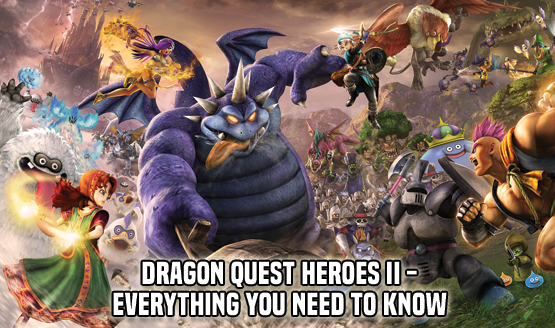
DQ Heroes II's worldwide launch is closing in fast, and PSLS has pieced together a handy guide to Koei Tecmo's RPG sequel.
-
What is Dragon Quest Heroes II?
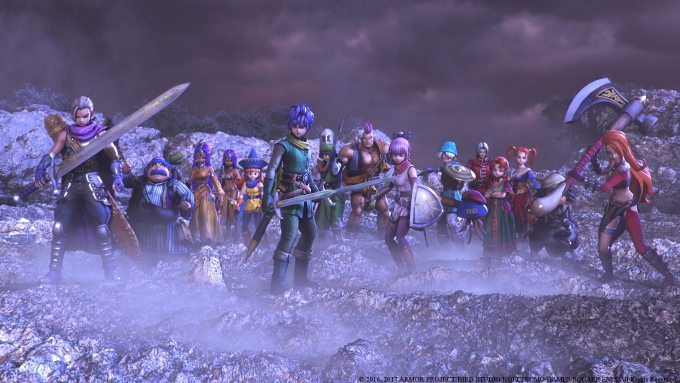
Its the sequel to World Tree's Woe and the Blight Below, and one that offers up a similar mix of musou (“warriors”) gameplay and RPG mechanics -- albeit with some refinements.
Dragon Quest Heroes II: Twin Kings and the Prophecy's End is the full title, for those keeping track.
-
What's the Story?

Dragon Quest Heroes II opens at a time of peace for the seven kingdoms. But there's trouble brewing on the horizon, and when those kingdoms wage war on one another -- seemingly under the influence of an ancient prophecy -- it's up to the Heroes to restore some semblance of peace.
Per Square Enix:
“An unknown force is threatening the Seven Realms and In Dragon Quest Heroes II you take control of one of the protagonists Lazarel or Teresa and fight alongside a band of unique and powerful heroes from the Dragon Quest series.”
-
How Does it Play?

As we alluded to before, Dragon Quest Heroes II plucks the hack-and-slash gameplay associated with Koei Tecmo's Dynasty Warriors and infuses it with the characters, monsters, universe, and lore from Square's beloved Dragon Quest series.
"Not only can you swap between characters but Lazarel and Teresa have the ability to change vocations! If you want to fight as a mighty Warrior, holy Priest, devious Thief, skilful Martial Artist, powerful Mage, devastating Gladiator or benevolent Sage you can and the choice is yours. Combine this with the massive amount of gear you can equip and spells you can cast, Dragon Quest Heroes II allows you to fully customise your playstyle."
-
Welcome to the Seven Realms
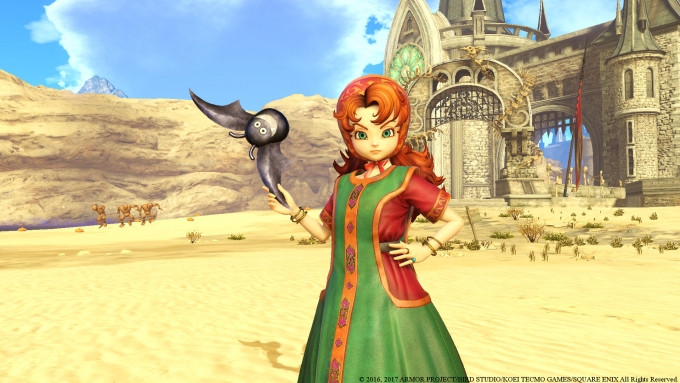
Forget the Nine Realms of the Marvel universe, Dragon Quest Heroes II takes place in the Seven Realms, a lush, magical kingdom comprised of sweeping forests and icy tundra.
Per Square Enix:
“As an all-new and improved feature, Dragon Quest Heroes II takes place in completely expansive and interconnected environments. This means you can run from one area to the next through a connected world.
“Monsters also roam freely, minding their own business until you get too close… It’s up to you to decide how and where you travel but danger could lurk in the most unexpected places…”
-
A History Lesson
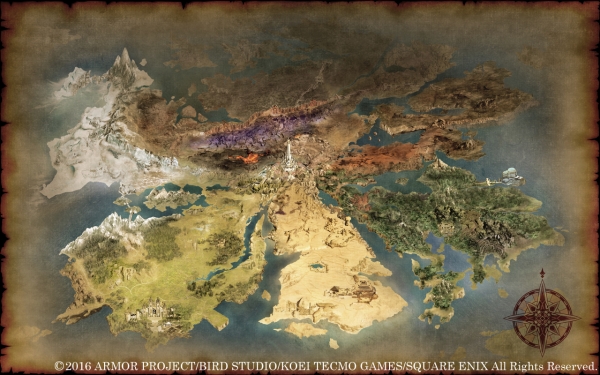
Delve a little deeper into the rich world of DQ Heroes II with this prologue:
"On the day the dragon eats the sun, the twins will be born, and the land will be covered in war once again.
"The setting of Dragon Quest Heroes II‘s story is seven kingdoms that have seen continued peace over a long period. However, that balance suddenyl crumbles one day, and war breaks out. It’s as if the events are following an ominous prophecy handed down from ancient times…
"Razel, who is studying at the military academy in Orenka, and Tereshia, who comes to Orenka wanting to visit Razel, in the wake of the battle between their homeland of Gywall and Orenka, get caught up in the giant battle that covers the world.
"Can the heroes stop a giant war involving seven countries?
"Large armies of monsters square off against each other, and the battle finally began."
-
Meet the Heroes
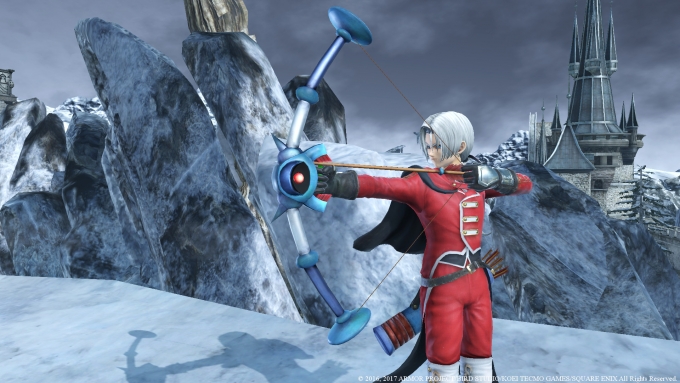
Meet Lazarel and Teresa. You don't know them yet, but they're the two protagonists of Dragon Quest Heroes II, and you'll be able to get a glimpse of both -- not to mention the cutesy slime, Healix -- right here.
Meanwhile, a second spotlight video ushers Desdemona & Cesar into the limelight.
-
Characters Designed By Akira Toriyama
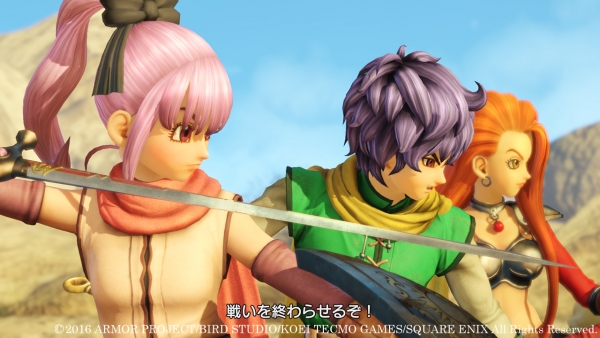
Akira Toriyama is the artist responsible for many of the characters seen in Dragon Quest Heroes II.
"The protagonists of this work are Razel, who is studying abroad at a military academy in Orenka, and his cousin Tereshia. Just like Dragon Quest Heroes: The World Tree’s Woe and the Blight Below, you can select between either protagonist and the story will follow their point of view. The protagonists and their friends were designed by Akira Toriyama."
-
Online Play
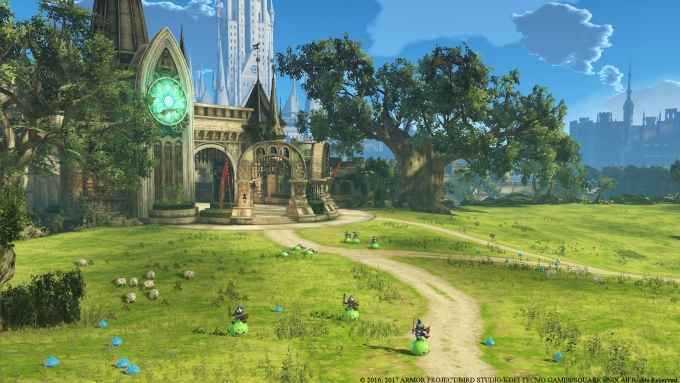
It's dangerous to go alone, as a wise old man once said. Thankfully, Dragon Quest Heroes II comes packing online support allowing you to partner with up to four players.
"Throughout your adventure across the Seven Realms you will come across special maps which will give you access to the Dimensional Dungeon. These are unique online co-op dungeons and while not all of them are designed to be finished after you complete the main story, there are plenty that are filled with extra high level enemies but also rare items and rewards so there will be plenty to keep you and your friends busy, even once you’ve finished the main story."
-
Overview Trailer
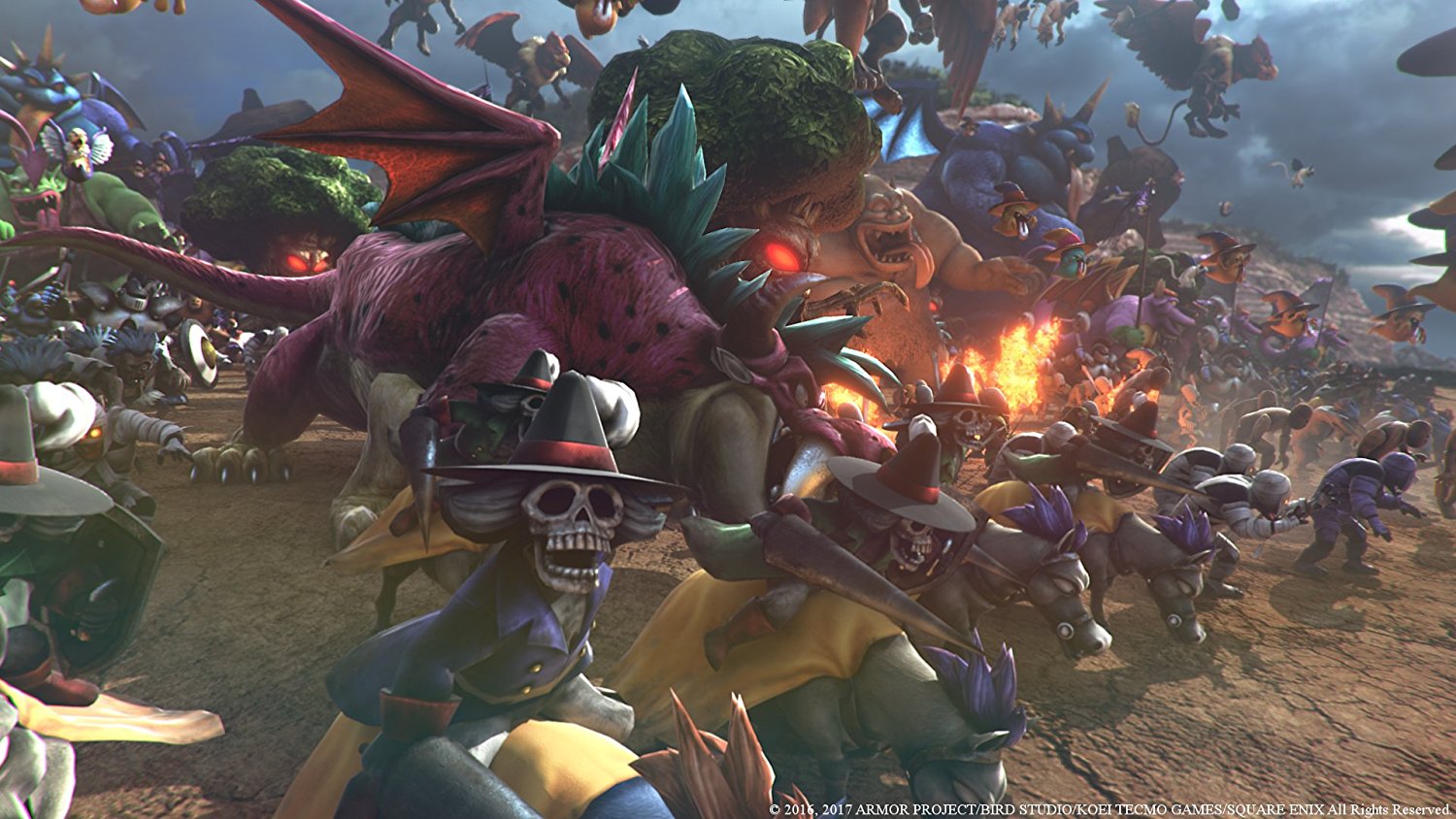
If you're wanting a bite-sized overview of Dragon Quest Heroes II, we've got you covered.
-
Demo Now Available
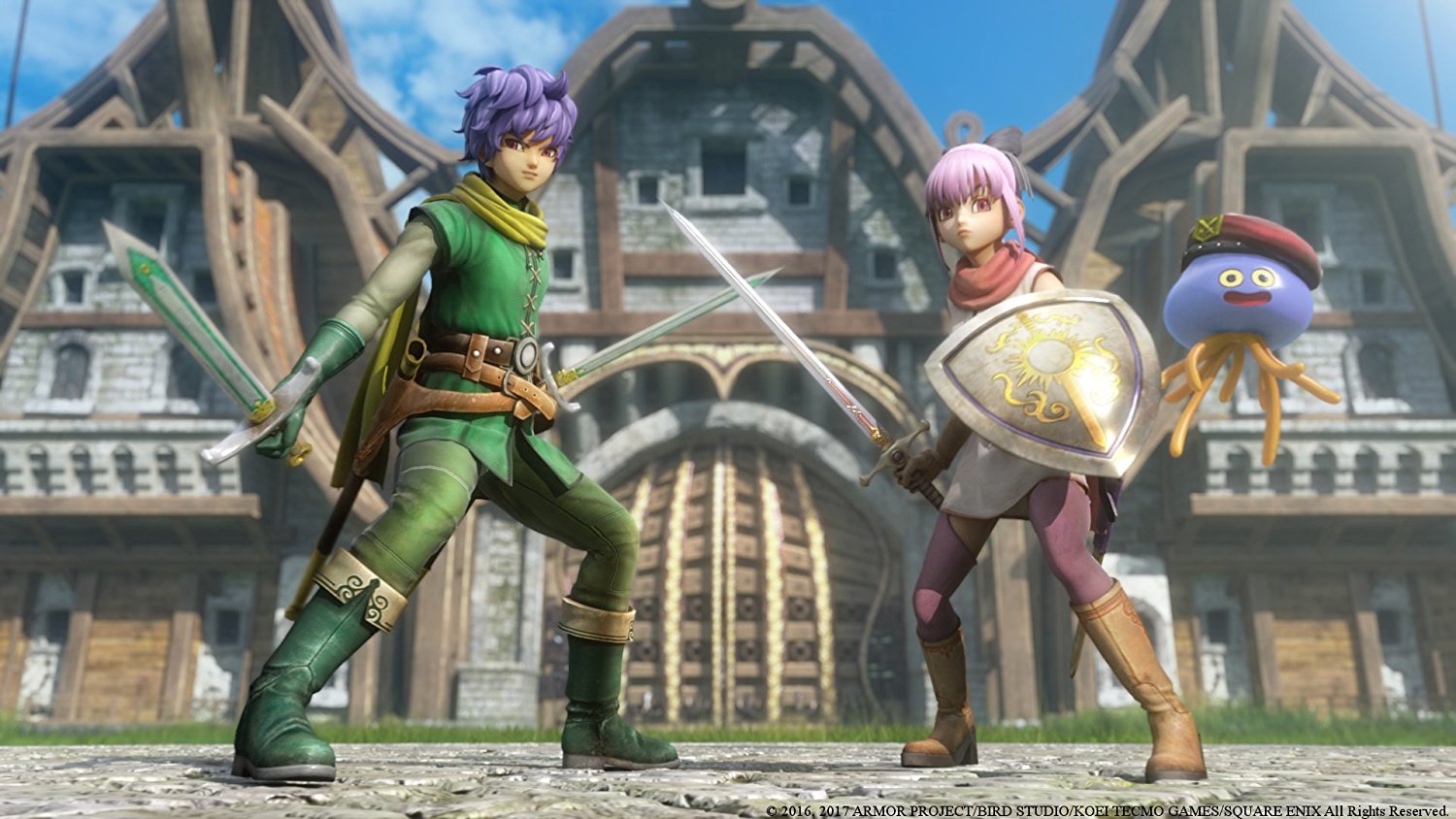
Weighing in at around 5GB in size, a PS4 demo for Dragon Quest Heroes II is available right now. Here’s how Square Enix previewed the vertical slice:
“The demo gives players an early chance to play as four of the 15 playable heroes from the full game’s story mode, including series newcomers Lazarel and Teresa, along with fan favorites Carver (Dragon Quest VI) and Maribel (Dragon Quest VII). Players will experience the game’s fast-paced battle system, expansive environments, and abundant treasures through specially-designed quests where they must defend Greena Pastures from hordes of monsters and a colossal boss.”
-
Vita Version Will Remain Exclusive to Japan
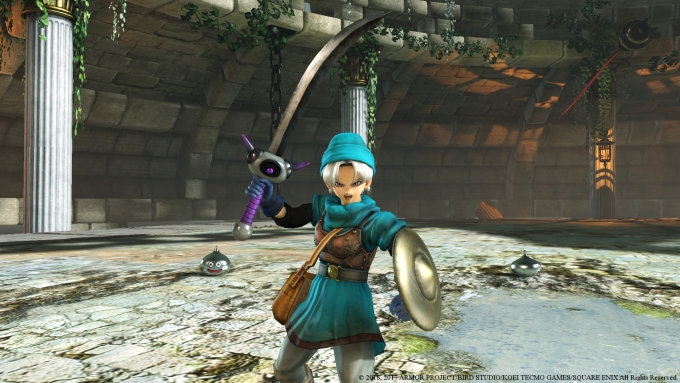
Don't hold your breath for the Vita version to make its way west anytime soon. Square Enix’s Dan Seto confirmed as much back in December, stating:
“Sorry you feel that way but unfortunately, the Vita version just isn’t a viable option for us to localise and bring over. Hopefully, you’ll still give the PS4 version a chance and enjoy it all the same.”
-
A Favorable Debut in Japan

Following its Japanese debut in May of last year, Square Enix posted "favorable" sales figures for Dragon Quest Heroes II "on top of strong download sales of catalogue titles released previously."
-
A Raft of Screenshots
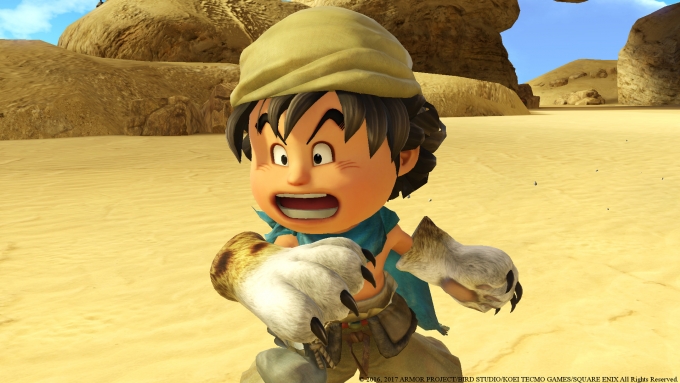
Curious to take a peek at DQ Heroes II's many environments? This gallery of 40+ screenshots ought to do the trick.
-
Throwback to Our Review of the Original DQH
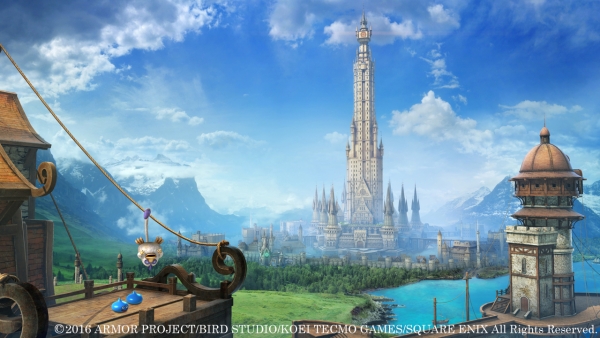
In our glowing review of The World Tree’s Woe and the Blight Below, we deemed Square's RPG to be "the next must-have title for fans of the genre on Sony’s newest console."
-
Extended Gameplay
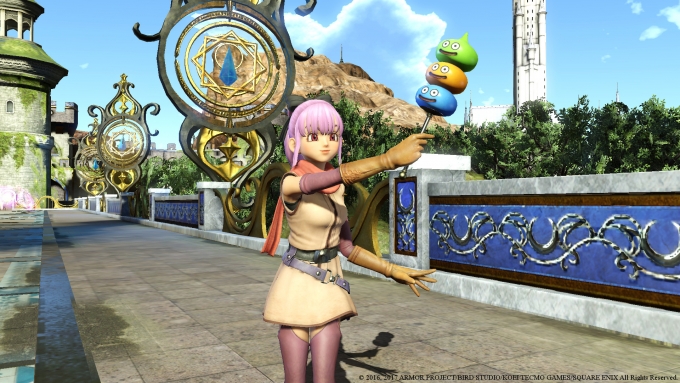
Now that you've meet the Heroes, it's time to take a peek at Dragon Quest Heroes II in action. Here's an extended, 15-minute demo for your viewing pleasure.
-
Trophy List

Exophase has posted the official Trophy list for Dragon Quest Heroes II, but be wary of potential story spoilers.
-
Import Review
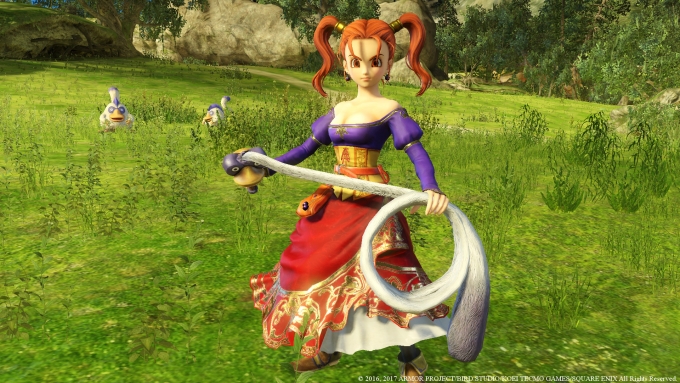
PSLS' resident Japanese expert Heath Hindman got to grips with a review copy of Dragon Quest Heroes II last year and left overly impressed, writing that Square's sequel "comes as an easy recommendation to any musou fan and anyone who liked the first Dragon Quest Heroes. It keeps the classic Dragon Quest world and Warriors-style combat that made the first so fun while tossing in some small changes and additions that make this sequel a worthy successor."
-
Explorer’s Edition
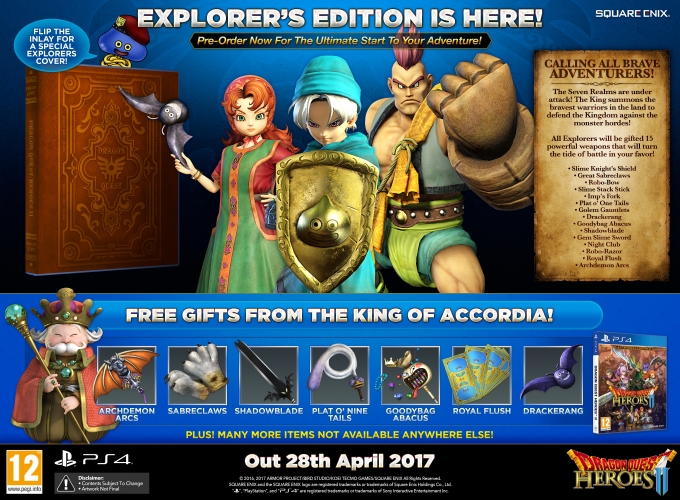
Priced at $59.99, the contents of DQ Heroes II's Explorer's Edition can be found below:
- Includes the Full Game, Reversible Cover, 15 DLC Weapons includng Archdemon Arcs, Drackerang, Gem Slime Sword, Golem Gauntlets, Goodybag Abacus, Great Sabreclaws, Imp's Fork, Night Club, Plat o' One Tails, Robo-Bow, Robo-Razor, Royal Flush, Shadowblade, Slime Knight's Shield, Slime Stack S tick.
- Online Multiplayer - Up to 4 players can play online.
- Transform into a monster and battle as one of them.
- New world, new story & new adventures.
- Numerous playable characters each with unique abilities.
-
Our Final Verdict
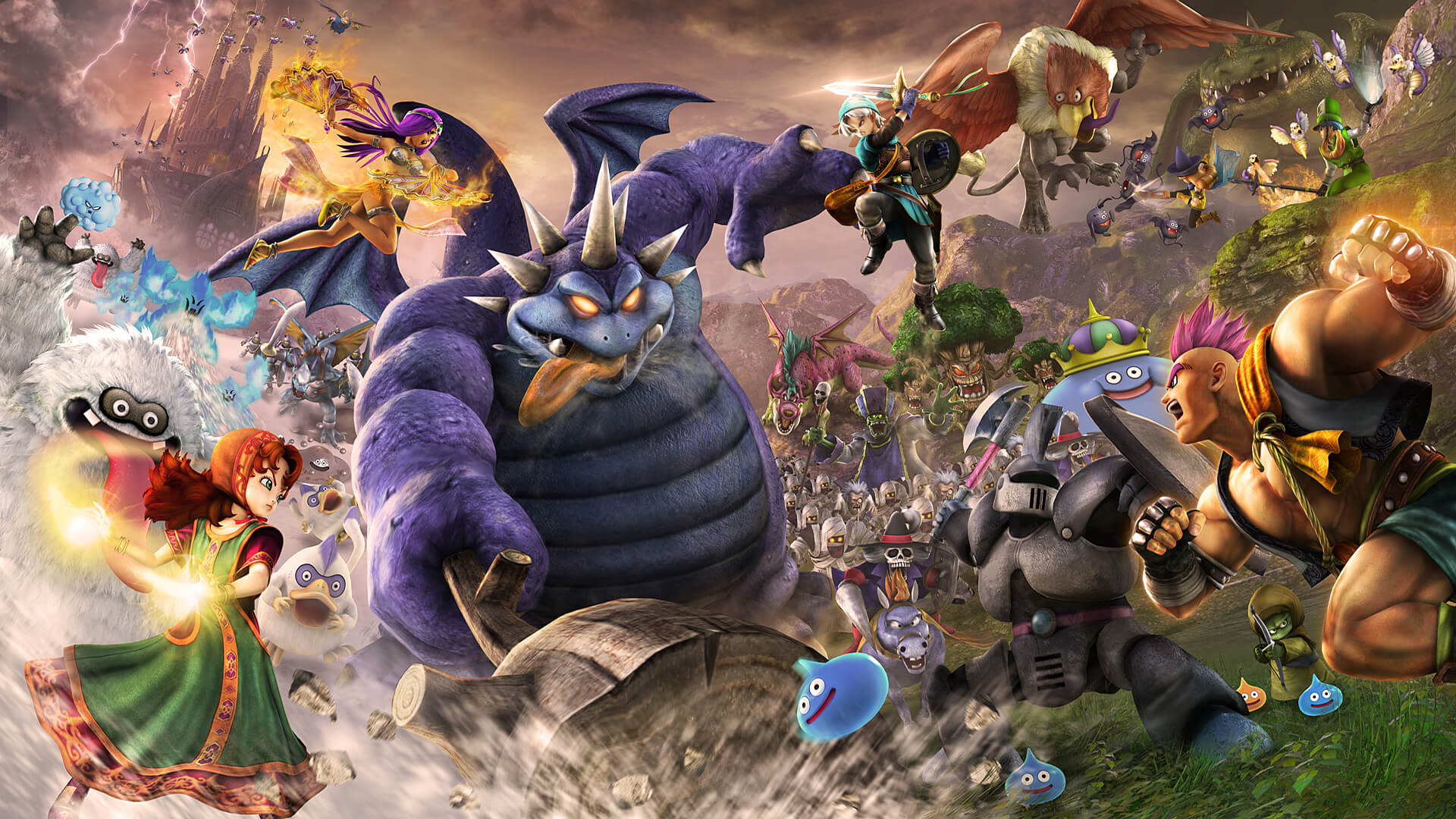
Tyler Treese is handling the English-language review for PSLS. The embargo has been set for April 25, so keep your peepers peeled.
